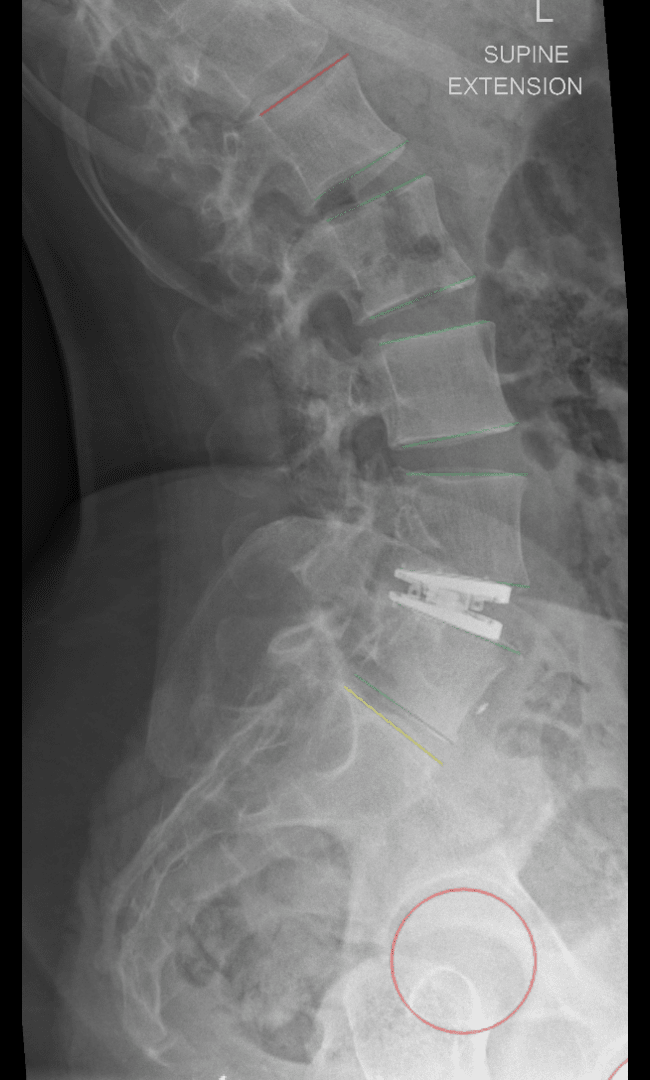Potential Benefits
When comparing lumbar disc replacement to spinal fusion, several advantages may make disc replacement preferable:
- Preservation of Motion:
- Disc Replacement: Maintains natural flexibility by mimicking a natural disc.
- Fusion: Permanently joins vertebrae, reducing movement.
- Reduced Risk of Adjacent Segment Disease:
- Disc Replacement: Preserves motion, decreasing stress on adjacent discs.
- Fusion: May accelerate degeneration of neighbouring discs.
- Faster Recovery:
- Disc Replacement: Typically offers a quicker recovery with less muscle damage.
- Fusion: Requires a longer period for bone healing and immobilization.
- Lower Long-Term Complication Risk:
- Disc Replacement: Continues motion and may reduce future complications.
- Fusion: Can lead to stiffness and additional surgeries in adjacent segments.
- Pain Relief:
- Disc Replacement: Offers effective pain relief with improved functional outcomes.
- Fusion: Provides pain relief at the cost of lost mobility.
- Avoidance of Bone Grafting:
- Disc Replacement: Typically does not require bone grafting.
- Fusion: Usually requires bone grafting with its inherent risks.
- Future Treatment Options:
- Disc Replacement: Preserving motion can keep more options open if needed later.
- Fusion: Fusion is permanent, limiting future treatment choices.
Imaging Views



Why Is Disc Replacement Controversial?
Lumbar disc replacement is debated due to factors including:
- Long-Term Outcomes & Durability:
- Uncertainty about the longevity of artificial discs.
- Potential need for revision surgery if the disc fails.
- Patient Selection Criteria:
- Ideal candidates are usually younger and active with isolated disc disease.
- Complex diagnosis can lead to suboptimal outcomes if not carefully assessed.
- Technical Challenges & Surgical Expertise:
- The procedure is technically demanding, requiring high surgical skill.
- Surgeon experience is critical for optimal outcomes.
- Complication Risks:
- Device-related issues, such as dislodgment or wear.
- Comparative Effectiveness vs. Fusion:
- Some studies show inconsistent benefits over fusion.
- Higher cost-effectiveness debates exist.
- Regulatory and Market Issues:
- Varying availability and evolving device technologies add to uncertainty.
- Lack of Consensus:
- Divergent opinions among spine surgeons on its indications.
Summary
While lumbar disc replacement offers potential benefits like preserved motion, faster recovery, and lower long-term complications, concerns about durability, patient selection, and technical complexity make it a subject of ongoing debate. It remains an important option for treating chronic lower back pain.
What is Involved in the Surgery?
The procedure begins with the administration of general anesthesia. The lumbar spine is accessed via an anterior approach (through the abdomen) with the assistance of a vascular surgeon.
- Preparation: General anesthesia is given.
- Accessing the Spine: The disc is accessed through the abdomen without cutting major back muscles.
- Removing the Damaged Disc: The disc causing nerve compression is removed under high-powered microscopic magnification.
- Inserting the Artificial Disc: An artificial disc is inserted into the disc space to restore natural motion.
- Closing the Incision: The incision is closed with dissolvable sutures after X-ray confirmation of disc placement.
Postoperative Recovery
- Hospital Stay: Typically 1-2 days.
- Outpatient Rehabilitation: Physiotherapy usually begins around 2 weeks post-surgery.
- Pain Relief: Significant nerve pain relief is common, with medications used for 2-4 weeks.
- Activity Restrictions: Avoid bending, lifting, or twisting for the first 3 months.
Benefits and Risks
- Benefits:
- Effective pain relief and improved mobility.
- Preservation of natural spinal motion.
- Faster recovery and lower risk of adjacent segment disease.
- Avoidance of bone grafting.
- Potentially fewer long-term complications.
- Risks:
- Infection, blood clots, or device-related issues.
- Potential need for revision surgery.
- Concerns regarding long-term durability.
- Higher costs compared to fusion.
It is essential to discuss all treatment options with Prof Aaron Buckland to determine the best approach for your condition.
To learn more about Prof Aaron Buckland’s results with lumbar disc replacement, click here.
Ready to take the next step? Contact our expert team today to schedule a consultation and explore your treatment options.
Contact Us Refer a Patient



